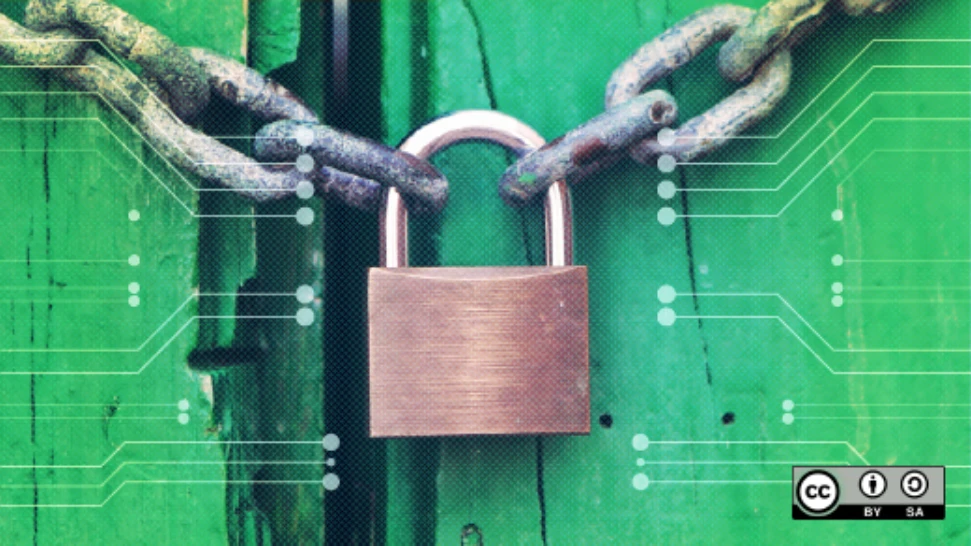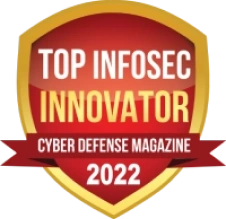What is Zero Trust Security?
Zero Trust Security is a cybersecurity framework that operates on the principle of "never trust, always verify." Unlike traditional security models that assume trust for users and devices inside a network perimeter, Zero Trust continuously verifies every request, regardless of location or origin. This approach is designed to minimize security risks, prevent unauthorized access, and protect organizations from modern cyber threats, including ransomware, insider threats, and advanced persistent attacks.
At its core, Zero Trust Security eliminates implicit trust by enforcing strict identity verification, least privilege access, and real-time monitoring of network activity. Instead of relying on a single security perimeter, Zero Trust treats every access request as potentially malicious, requiring continuous authentication and authorization. This means that even if a user or device has been previously authenticated, additional verification measures may still be required based on factors such as device health, user behavior, and access patterns.
One of the key components of Zero Trust is identity and access management (IAM),which ensures that only authorized users can access sensitive data and resources. Multi-factor authentication (MFA) plays a crucial role in this process by requiring users to verify their identities using multiple authentication factors, such as passwords, biometrics, or one-time codes. In addition, Zero Trust enforces the principle of least privilege, which grants users only the minimum access necessary to perform their tasks, reducing the risk of lateral movement by attackers.
Another fundamental aspect of Zero Trust Security is micro-segmentation. This technique divides a network into smaller, isolated segments, preventing unauthorized movement within the system. If an attacker gains access to one segment, they are unable to move freely across the network, limiting the scope of potential damage. Micro-segmentation is particularly useful for protecting critical infrastructure, sensitive data, and cloud environments.
Zero Trust Security also incorporates continuous monitoring and analytics to detect anomalies and potential threats in real time. By leveraging artificial intelligence and machine learning, organizations can identify suspicious behavior, flag unusual access attempts, and respond to security incidents before they escalate. This proactive approach helps organizations stay ahead of evolving cyber threats and strengthens overall security posture.
With the rise of remote work, cloud computing, and sophisticated cyberattacks, Zero Trust Security has become essential for modern businesses. By eliminating blind trust and verifying every access request, organizations can significantly reduce their attack surface and enhance data protection. Implementing Zero Trust requires a shift in mindset, but its benefits in mitigating cyber risks and ensuring secure access make it a critical component of any cybersecurity strategy.
What is Zero Trust Network Access?
Zero Trust Network Access, often abbreviated as ZTNA, is a cybersecurity approach that enforces strict identity verification for every person or device trying to access resources on a private network, regardless of whether they are inside or outside the perimeter. Unlike traditional security models that operate on the assumption that everything inside an organization’s network can be trusted, Zero Trust Network Access is built on the principle of “never trust, always verify.” This shift has become critical in today’s environment where workforces are increasingly distributed, applications are hosted across hybrid cloud environments, and cyber threats are more advanced than ever.
ZTNA replaces the traditional castle-and-moat model, where users inside the network perimeter were trusted by default. In that older model, once attackers breached the perimeter, they often had free rein to move laterally across the network. With Zero Trust Network Access, trust is not automatically granted based on network location. Instead, users and devices must continuously prove who they are, what access they need, and whether they meet certain security conditions before being allowed access to specific applications or data.
At the heart of ZTNA is the concept of least privilege access. This means users are only granted access to the applications and data they need to perform their job functions—nothing more. This minimizes the potential damage in the event of a compromised account or device. ZTNA solutions often use identity and access management (IAM),multifactor authentication (MFA),device posture checks, and encryption to make access decisions in real-time.
Another important aspect of Zero Trust Network Access is micro-segmentation. This involves dividing the network into smaller zones and enforcing granular access controls within each segment. By doing so, ZTNA limits the lateral movement of attackers and reduces the overall attack surface.
ZTNA is particularly well-suited for organizations supporting remote work, bring-your-own-device (BYOD) policies, and cloud-based application environments. It enables secure, policy-based access to applications without exposing the entire network, often replacing traditional VPNs that grant broad network access once connected.
In summary, Zero Trust Network Access is a modern, proactive security model designed to address the limitations of perimeter-based defenses. By requiring verification at every step, enforcing least privilege, and reducing implicit trust, ZTNA dramatically enhances an organization’s ability to prevent unauthorized access, reduce the risk of data breaches, and maintain control over a constantly evolving IT environment.
Zero Trust History
The concept of Zero Trust has its roots in the growing realization that traditional perimeter-based security models were no longer effective in a world where data, users, and applications were no longer confined within a physical network boundary. The history of Zero Trust can be traced back to 2010 when John Kindervag, then a principal analyst at Forrester Research, first introduced the term “Zero Trust” as a revolutionary approach to cybersecurity. His core message was simple but powerful: security should not be based on location, and no user or device should be trusted by default, even if they are inside the network.
In the early years, Zero Trust was more of a conceptual framework than a fully implemented model. Organizations were still heavily reliant on firewalls, VPNs, and other perimeter-based defenses. However, as cyberattacks became more sophisticated and data breaches began to frequently target trusted insiders or compromised credentials, the limitations of these traditional security models became glaringly obvious. The need for a new approach that emphasized verification, least privilege, and segmented access grew stronger.
By the mid-2010s, technology vendors and cybersecurity professionals started to embrace Zero Trust principles in practical ways. The rise of cloud computing, mobile workforces, and bring-your-own-device (BYOD) policies made the perimeter increasingly irrelevant. These trends accelerated the adoption of identity and access management (IAM),multifactor authentication (MFA),endpoint security, and micro-segmentation—core technologies that support a Zero Trust architecture.
In 2020, the U.S. government further validated the importance of Zero Trust when the National Institute of Standards and Technology (NIST) released its Zero Trust Architecture guidelines (SP 800-207). This publication provided a formalized definition and practical implementation strategies, encouraging both public and private sectors to adopt Zero Trust as a standard security model.
The urgency around Zero Trust intensified in 2021 following a series of high-profile cyberattacks, including the SolarWinds and Colonial Pipeline incidents. These events highlighted how attackers could exploit implicit trust and lateral movement within networks. In response, the White House issued an Executive Order directing federal agencies to implement Zero Trust principles, signaling a major shift in national cybersecurity policy.
Today, Zero Trust is widely regarded as a best practice for modern cybersecurity. It has evolved from a theoretical model into a strategic imperative for organizations of all sizes. Its history reflects a broader shift in cybersecurity—from defending the perimeter to assuming breach and continuously verifying every request for access.
Examples of Zero Trust Architecture
Examples of Zero Trust Architecture can vary based on the needs and environments of different organizations, but all implementations follow the same core principle: never trust, always verify. Rather than providing broad access based on network location, Zero Trust architectures enforce strict access controls based on user identity, device health, and contextual risk. These architectures can be deployed in a range of scenarios, from securing cloud applications to protecting on-premises systems and remote workforces.
One common example of Zero Trust in action is identity-centric access to cloud applications. In this model, users attempting to access cloud-based tools like Microsoft 365 or Salesforce must authenticate using multifactor authentication (MFA) and pass contextual checks, such as geolocation, device status, and behavioral analysis. Access is granted only to the specific application or data needed—without exposing the rest of the network or unrelated services.
Another example involves Zero Trust Network Access (ZTNA) for remote workers. Rather than using a traditional VPN that provides full network access, employees use a ZTNA solution that authenticates their identity and evaluates the security posture of their device before granting them access to a specific internal application. The session is encrypted and continuously monitored, with policies enforced in real time. If the device becomes non-compliant—say, it loses antivirus protection or connects from a suspicious IP—the session can be terminated immediately.
Zero Trust principles can also be applied to securing internal east-west traffic within a corporate network. Using micro-segmentation, a company can isolate workloads across different departments—such as HR, Finance, and R&D—ensuring that a compromise in one area does not provide access to others. For example, a malware infection on a finance machine would not allow the attacker to pivot into systems housing sensitive HR data, because Zero Trust policies prevent lateral movement.
Another practical Zero Trust example is the use of device trust and application-level gateways in a hybrid cloud environment. Here, access decisions are made at the application layer, not the network layer. This ensures that only authorized users on secure, compliant devices can connect to mission-critical services, whether hosted on-premises or in the cloud. These systems often rely on continuous authentication, endpoint detection and response (EDR),and behavior-based analytics to dynamically adjust access in real time.
Ultimately, these examples show that Zero Trust is not a one-size-fits-all solution but rather a flexible framework that can be adapted to various environments. Whether protecting cloud assets, remote workers, or internal infrastructure, the goal remains the same: limit access, verify continuously, and minimize the blast radius of any potential breach.
Why Use a Zero Trust Model?
Organizations choose to adopt a Zero Trust model because it offers a more secure, adaptive, and modern approach to protecting sensitive data, applications, and infrastructure. Unlike traditional security models that rely heavily on perimeter defenses and implicit trust for users inside the network, Zero Trust continuously verifies every access request based on identity, context, and device posture. This approach significantly reduces the risk of cyberattacks, data breaches, and insider threats by eliminating the assumption that anything or anyone inside the network can be trusted.
One of the primary reasons to use a Zero Trust model is its effectiveness in stopping lateral movement within a network. In many cyberattacks, once an attacker breaches a system, they are able to move undetected from one asset to another, accessing more critical systems over time. Zero Trust prevents this by enforcing least privilege access and micro-segmentation, allowing users and devices to only access the specific resources they are authorized for—and nothing more. This minimizes the blast radius of an attack and prevents it from escalating across the organization.
Another benefit is the enhanced protection of remote workforces and cloud environments. As employees increasingly work from home and organizations migrate applications to the cloud, the traditional network perimeter becomes irrelevant. Zero Trust addresses this shift by treating all access requests—regardless of location or device—as untrusted until verified. By requiring strong authentication, checking device compliance, and applying granular access controls, Zero Trust helps ensure secure access to resources across distributed environments.
Zero Trust also supports compliance and regulatory requirements more effectively. By logging all access requests and continuously monitoring user behavior, organizations gain greater visibility into who is accessing what and when. This helps satisfy audit requirements, reduces the likelihood of non-compliance penalties, and builds a stronger overall security posture.
Scalability is another key advantage of Zero Trust. As businesses grow, expand to new markets, or adopt new technologies, traditional security models often struggle to keep up. Zero Trust architectures are designed to be flexible and adaptable, making it easier for organizations to scale securely without compromising on protection.
In short, the Zero Trust model offers a proactive, risk-based approach to cybersecurity. It minimizes the potential for breaches, improves response times, supports compliance efforts, and aligns security with modern IT environments. By assuming breach and verifying everything, Zero Trust gives organizations a stronger foundation to defend against today’s sophisticated cyber threats.
How to Implement Zero Trust Architecture
Implementing Zero Trust Architecture is a strategic process that involves more than just deploying new technologies—it requires a shift in mindset, security policies, and how access to systems is managed across an organization. Zero Trust is not a single product but a comprehensive framework that combines people, processes, and tools to ensure that no user, device, or application is automatically trusted, regardless of its location within or outside the network.
The first step in implementing Zero Trust is identifying and classifying your organization’s most valuable assets. This includes sensitive data, critical applications, and key infrastructure components. Understanding what needs protection allows you to prioritize access controls and define clear policies around who should have access to what—and under what conditions.
Next, establish strong identity and access management (IAM) practices. This involves verifying the identity of all users through multifactor authentication (MFA),role-based access control (RBAC),and user behavior analytics. Every user should only have access to the resources necessary for their role, and that access should be continuously monitored and adjusted based on risk.
Device security is another crucial component. Organizations must evaluate the health and compliance of devices trying to access corporate resources. This includes checking for up-to-date antivirus software, proper encryption, and device posture before granting access. If a device is compromised or out of compliance, access should be blocked automatically.
Network segmentation and micro-segmentation are also essential to a Zero Trust implementation. Rather than allowing users to move freely within the network, Zero Trust restricts lateral movement by creating secure zones and enforcing access policies between them. This limits the potential damage from a breach, as attackers are unable to escalate or pivot across the network.
Organizations should also implement continuous monitoring and analytics. Logging access attempts, monitoring user behavior, and using threat detection tools like endpoint detection and response (EDR) or security information and event management (SIEM) platforms help detect and respond to threats in real time. These insights can also inform policy adjustments and improve overall security posture.
Lastly, ensure that security policies are consistently applied across all environments—whether on-premises, in the cloud, or across hybrid systems. This means integrating Zero Trust principles into your DevOps pipeline, SaaS tools, and third-party vendor access as well.
Implementing Zero Trust is not a one-time project but an ongoing journey. It requires cross-functional collaboration, executive support, and a phased rollout strategy. When done correctly, it leads to stronger, more resilient cybersecurity that adapts to the evolving threat landscape.






